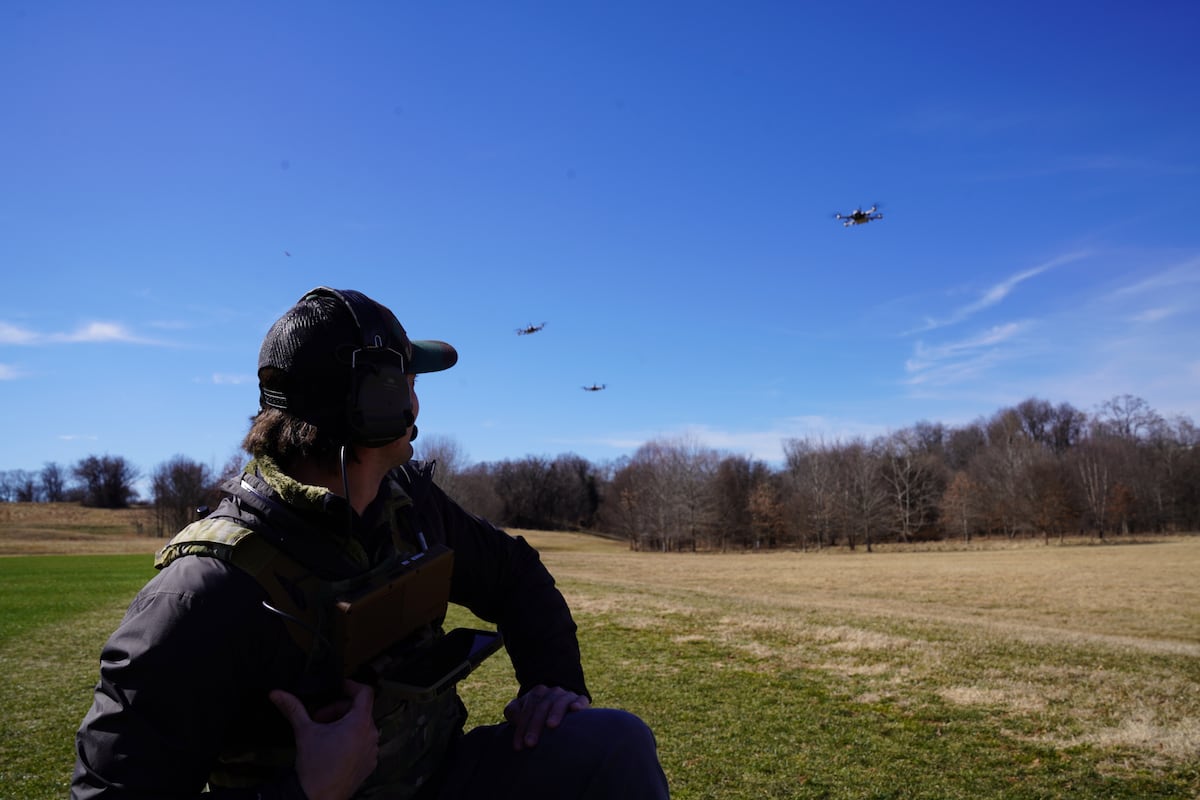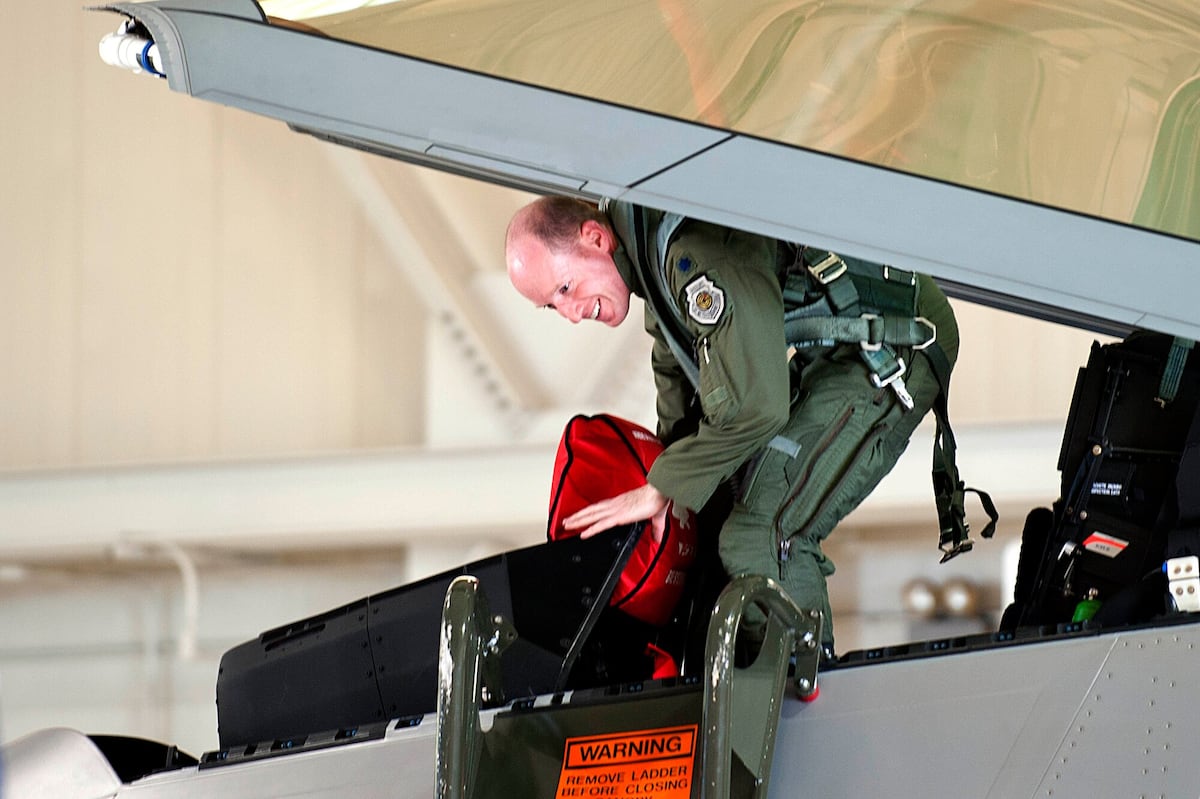A promising Air Force Research Laboratory system designed to integrate drones into air traffic management systems at military installations could one day be installed at bases around the world.
AFRL’s Collaborative Low-Altitude Uncrewed Aircraft System Integration Effort, or CLUE, fuzes data from radars, counter-UAS systems and other sensors to create a shared operating picture for air traffic controllers, security forces and UAS operators.
John Sawyer, a UAS analyst for the Office of the Undersecretary of Defense for Acquisition and Sustainment — which is leading efforts within DOD to partner with the Federal Aviation Administration to improve airspace integration — said CLUE is a game changer.
“Your security teams see more than just what their Counter UAS sensors are seeing. Your air traffic controllers can now see the drones. Your UAS operators can now see everyone else,” Sawyer told Defense News on the sidelines of a June 25 Defense Innovation Unit drone test in Fairbanks, Alaska. “That makes it a lot easier to integrate.”
Managing both manned aircraft and unmanned drones operating in the same airspace is a growing challenge for both civil and military air traffic controllers. For the Defense Department, which provides about 20% of the air traffic control services in the United States, solving the problem helps enable its plans to increase its own UAS inventory while also protecting bases and troops from enemy drones, Sawyer said.
CLUE began development in 2016 at the lab’s information directorate in Rome, New York. In 2022, the service took the system to MacDill Air Force Base in Florida for initial testing. Then last year, AFRL — in partnership with DIU, the Pentagon’s acquisition office and several companies — integrated several UAS platforms into the uncrewed traffic management system. During the demonstration, CLUE provided operators with a visual tool to help with air traffic deconfliction, UAS identification and FAA compliance.
Sawyer said the system has shown “a lot of promise” in these demonstrations and tests and DOD plans to install CLUE at Ramstein Air Force Base in Germany later this year. At the same time, the Pentagon is close to establishing a requirement for the system that could start the process of acquiring and fielding it at DOD installations.
“I would hope that within the next month the senior leadership says, ‘Yes, that’s a requirement that we need this ecosystem to develop. It’s an operational requirement to have an ecosystem that enables us to integrate those mission sets on an installation,’” he said.
Beyond CLUE, Sawyer said the FAA and DOD are making progress normalizing integrated manned and unmanned airspace operations. He highlighted a new FAA regulation in the works, Part 108, that provides a framework for agencies and companies operating drones to fly beyond the visual line of sight with fewer restrictions and without the need for constant waivers.
“I think that’s going to do a lot to move the ball forward with beyond visual line of sight operations and really codifying unmanned traffic management,” Sawyer said. “There is definitely progress.”
Courtney Albon is C4ISRNET’s space and emerging technology reporter. She has covered the U.S. military since 2012, with a focus on the Air Force and Space Force. She has reported on some of the Defense Department’s most significant acquisition, budget and policy challenges.
Read the full article here








Leave a Reply